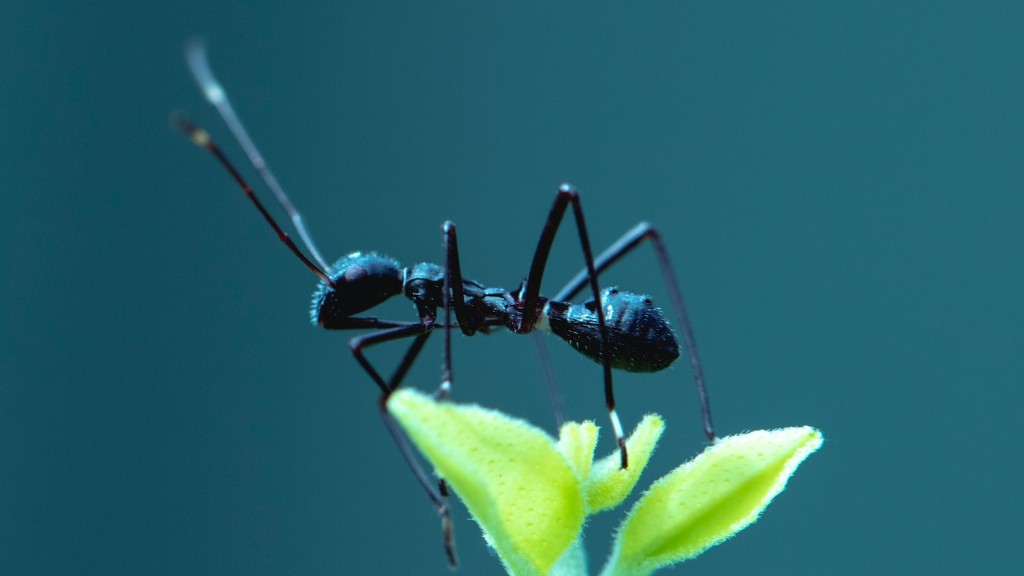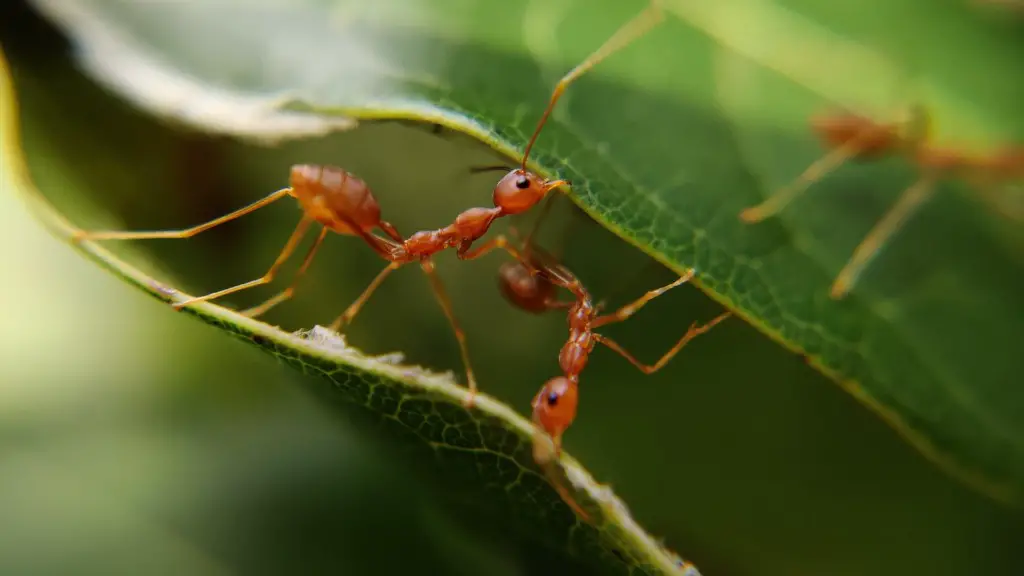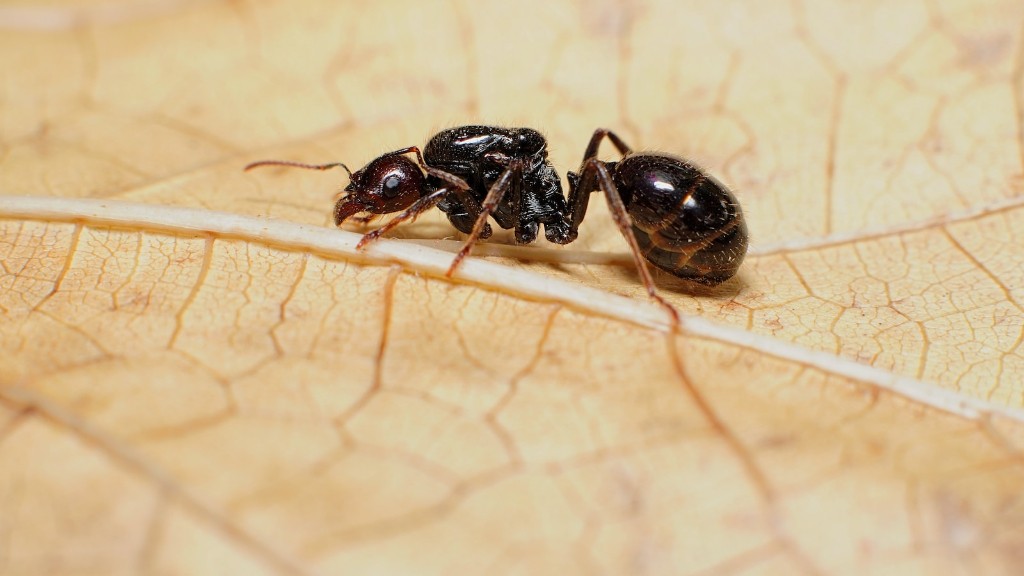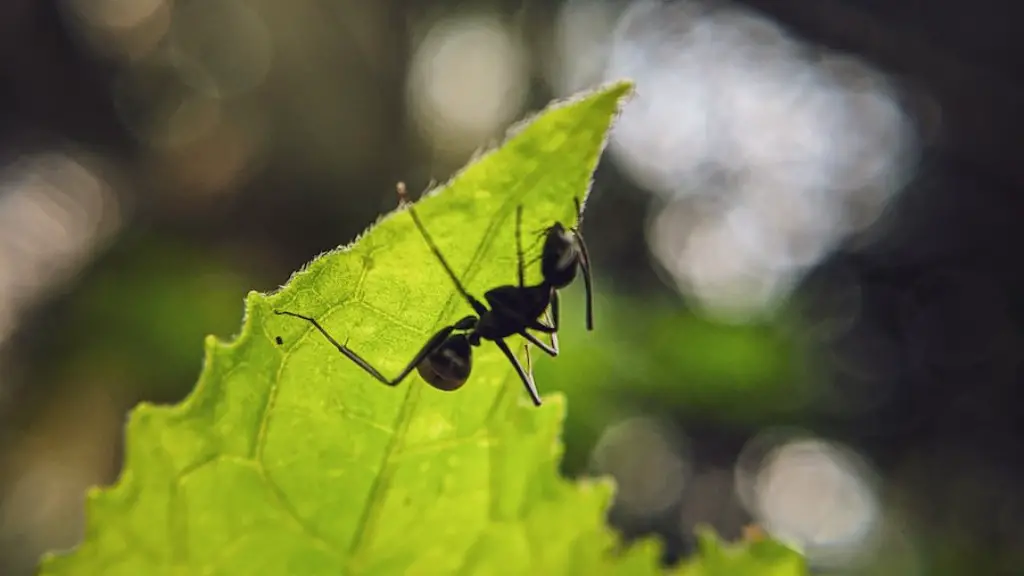Dealing with flying ants in the bathroom is a common problem. In this article, we’ll discuss how to identify, eliminate, and prevent flying ants from invading your bathroom. We’ll also provide some expert advice on products and treatments that can make a bigger difference.
Identifying flying ants can be difficult because there are many types of ants that inhabit households. They vary in color, size, lifestyle, and behaviors. Flying ants, however, typically have wings, but they are not always easy to spot since they usually remain hidden inside walls and attics. The best way to identify whether an ant has wings is to look closely at its body. Flying ants will have small wings on the back of their body, while regular ants do not.
In terms of elimination, the most effective approach is to use a combination of baiting and physical removal techniques. Baiting involves applying ant-killing chemicals directly to the areas where the flying ants have been spotted. Chemical baits work by luring ants to the bait, which they eat and carry back to the nest, where the poison kills the entire colony. Once the colony is eliminated, physical removal is the next step. This includes removing any debris, damaged wood, or other materials where the flying ants build their nest. Additionally, sealing any cracks and crevices in walls or windows is also essential for preventing future infestations.
Aside from eliminating the flying ants, it is important to take measures for prevention. The best way to do this is to keep bathrooms clean and dry as much as possible. This includes cleaning out drains, sealing leaks, wearing gloves when cleaning surfaces, and never leaving food or drink out in the open. Additionally, regular spraying of insecticides in the area can help dissuade flying ants from entering. Finally, make sure to repair any damage to walls, windows, or other areas where the flying ants are likely to enter.
Tips and Tricks
When dealing with flying ants, there are several tips that can make the job a bit easier. Firstly, inspecting the area to identify any points of entry is a must. Flying ants travel through small cracks and crevices, so it is important to find and seal them. Secondly, enlist the help of pest control companies if the infestation is particularly severe. Lastly, setting up traps can help reduce the number of flying ants before the application of insecticides.
Preparations
Before attempting to remove or prevent flying ants, it is important to prepare the area and make sure everything is in order. This includes disposing of garbage, keeping surfaces clean, and removing any items that could attract flying ants. In addition, make sure to wear protective clothing or masks to protect yourself from the chemical products you will be using. Finally, if possible, open windows or doors to provide the space with plenty of fresh air.
Products and Treatments
When it comes to eliminating flying ants, there are a variety of treatments and products available on the market. Baiting is the most common form of treatment, but traps and insecticides can also be used. Here are some of the most popular products:
- Insecticidal sprays – These are chemical sprays that are designed to kill flying ants.
- Baits – These are chemicals that are designed to attract ants and lure them away from their nest.
- Traps – These are adhesive traps that can be placed around the area to capture flying ants.
- Insecticidal dusts – These are powders that can be dusted around the area where the flying ants live.
When it comes to selecting the right product, it is important to consult an expert first. They will be able to advise on the best course of action, as well as the types of products that are most effective. It is also important to read the label and instructions carefully before applying any of the treatments.
Experts Views
When it comes to dealing with flying ants, it is important to consult the experts. According to entomologist Dr. John Sconce of the Department of Agriculture, “The key to success is to use a combination of products and techniques, such as baits, traps, and insecticides. This multi-faceted approach is essential for killing adult ants, as well as their larvae and eggs, and for discouraging future infestations.”
Similarly, Environmental protection Agency spokesperson Roberta Szymansky also stressed the importance of using multiple techniques: “It is important to take a holistic approach to dealing with flying ants. Not only should you use baits, traps, and insecticides, but you should also focus on prevention. This means cleaning and sealing any cracks or crevices where flying ants may enter, removing any damaged wood or debris, and keeping the area as dry and clean as possible.”
Environmental Considerations
When it comes to eliminating flying ants, it is important to remember the environmental considerations. Chemical treatments, such as baiting and insecticides, can be hazardous to humans and animals and should be used with caution. Additionally, some of the products may contain carcinogenic or toxic materials, so it is important to read the label carefully and make sure to use the product as directed.
Furthermore, it is important to consider the impact on the environment when selecting products. Many of the chemical treatments used for flying ants are considered non-biodegradable, meaning they persist in the environment long after their use. Therefore, it is important to opt for environmentally friendly products and use the least harmful chemicals possible.
DIY Solutions
For those looking to avoid chemical treatments, there are several do-it-yourself solutions that can be used to remove or prevent flying ants. One of the most popular methods is to make a solution of equal parts water and vinegar and spray it around the areas where the ants have been spotted. Another option is to sprinkle a combination of equal parts baking soda and powdered sugar around the area. Both of these solutions can help to repel flying ants and keep them away from your bathroom.
Additionally, vacuuming up flying ants is also an effective technique. Vacuums are a great way to remove flying ants without using any chemicals. Simply vacuum up the ants and seal the bag before discarding it in the trash.
Considerations
When it comes to dealing with flying ants, prevention is key. It is important to keep the bathroom and surrounding areas dry, clean, and sealed as much as possible. Regular inspection is also beneficial as it allows you to spot any potential nesting sites before the ants become established. Finally, it is important to remember that flying ants are attracted to food, so it is essential to make sure that food is stored securely and not left out in the open.
What To Avoid
When it comes to dealing with flying ants, there are certain things to avoid. Firstly, it is important not to use any chemical treatments around pets or children as they can be harmful. Additionally, it is essential to avoid spraying water or insecticides directly on the nesting site, as this can provoke the flying ants and cause them to flee to another location.
Furthermore, it is important to be aware of the potential damage that can be caused by flying ants. Their nests can weaken walls and other structures, so it is important to inspect the area and take preventative measures. Finally, it is important to be patient and not try to rush the process as elimination techniques can take time to be fully effective.




